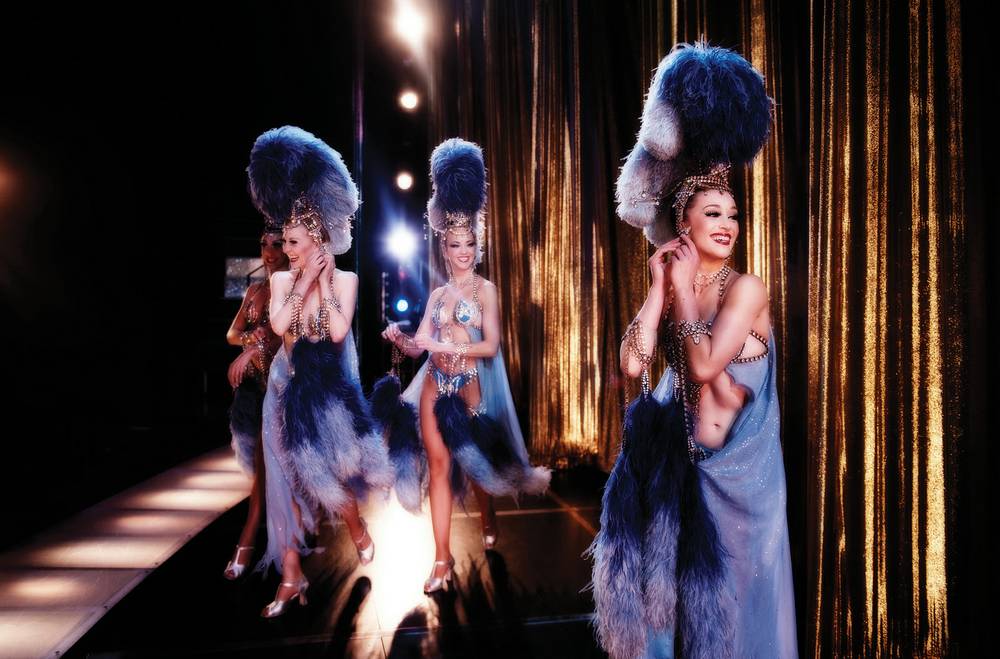The night I met Gene Lubas, in May 2011, we sat in judgment of 20 Elvis impressionists during the Ultimate Elvis Tribute Artist Contest on Fremont Street. Our most recent meeting was earlier this month, and we talked of the demise of Jubilee.
Lubas has touched some of our most treasured Las Vegas intuitions, that much is certain. He’s worked as a creative director for Cirque du Soleil in Viva Elvis at Aria, an inspired concept that never found its footing and in 2012 became the first Cirque show to close in Las Vegas. Lubas also spent some time directing Holly Madison’s 1923 Bourbon & Burlesque at Mandalay Bay, which wound up in a volley of still-unresolved lawsuits as Madison broke ties with her partners in the throwback nightclub.
For Lubas, it’s been more toil and heartache with Jubilee. For nearly two years, after stepping in for star-crossed choreographer Frank Gatson Jr., Lubas tried to “iron out the kinks that my predecessor put into it” as he describes. But nothing could save the show financially, and the city’s greatest showgirl production ends its 34-year run on February 11. In one of the burgundy booths facing the Jubilee stage, Lubas talked of the closing of the show and what might take its place.
What was your charge with the show when you were brought in after working with Holly in 1923? When I started, they asked me what I thought was wrong with the show, how to fix the Frank version or the version before. I made a list and they said, “Have at it, but do it in a way that makes sense financially.” I had to tackle the most painful things first—like the nine blackouts in the show, where the audience was like, “What’s happening? Is something wrong?” … I clipped the show artistically and financially. I removed the side stages, and that eliminated four-to-six technicians, saved money but gained grief with the union. We saved money by moving from six-month to one-year contracts, which meant we went from integrating new artists two times a year to one time a year, which saved money in buying new shoes, tights, G-strings, wigs, all of that.
Was there any change to the production that could have possibly saved Jubilee? Artistically? Maybe. I think if we had mechanized the show differently with some modernized technology, where there is a lot more button pushing and a lot less of what I call grunt work. You know, eight guys pushing the Titanic set on and Samson palace … We were paying more to operate the show than we were in entertaining people, just because it was so expensive. We couldn’t really move forward, because our profit-from-loss ratio was not balancing.
You didn’t have enough money to bring the show where you wanted it to be. Bingo. It’s a catch-22.
It always seemed that Jubilee was a beautiful show to look at, but that it lacked the sonic power and spectacle of other big Vegas productions. Absolutely. One of the things I really wanted to work on if we’d had more resources was Titanic. The response we’re getting from the audience is from a spectacle that was first presented in 1980, and at that time it was a spectacle. But that was before KÀ, before O, before Le Rêve, before MJ One. It was the thing to see, and the most modern thing to see, but it never went beyond that.
What’s next for this theater? Right now there’s nothing planned. We don’t have any deals finalized. We’re just waiting for somebody to write a check. But I want something that leaves the audience wanting more, something that tips its hat to its predecessor but throws in something that younger audiences like, so that we don’t have a strictly—and I don’t want this to sound wrong—but a strictly blue-haired audience. I would like it to be very elegant. I would like it to be both modern, entertaining and reminiscent of its predecessor with a lot of different things that we’ve never seen before.
Will we ever see a showgirl production of Jubilee’s scope in Las Vegas again? It’s tough, because of the industry standard to pay them. I mean, in MJ One there are 24 dancers, if that. We have currently, 64. I don’t think so. I don’t think anybody can afford it.
But a streamlined version with, say, a couple dozen dancers? Definitely. Especially with some modernized technology, I think it can be done. That’s why I think, whatever comes in here, if it’s a production show, it’s reconstructed to be able to afford the artistic team and creative team to do the things in a much more seamless way.
This theater is classic, but it needs work, doesn’t it? The stage is broken. We have not used a set of elevators since June, the revolving elevators. It’s 45-year-old mechanics, and nobody knows how to fix it anymore. … The showroom needs to be overhauled. Whatever is hopefully going to land in here … I hate to say it, but they are buying a broken car. It needs a lot of work.
You look at all the elements of Jubilee—the costumes and dancers and stagehands—they don’t build shows like that anymore, do they? Oh, no. It’s so sad. Everyone had seen the diminishing audiences, but it does tug at the heartstrings. This closing is all about what Jubilee has meant to so many people, how special and unique it is, and what a lavish production it really was.








